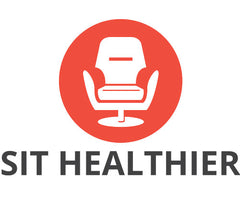In the age of technology and desk-bound jobs, it's essential to prioritize our well-being by understanding the importance of desk ergonomics and maintaining good posture while sitting. Prolonged sitting has been associated with various health issues, including musculoskeletal problems, and creating an ergonomically friendly workspace is crucial to mitigate these risks.
Understanding Ergonomics:
1. Desk Setup: Begin by optimizing your desk setup. Ensure that your desk is at a comfortable height, allowing your arms to rest comfortably on the surface with your elbows forming a 90-degree angle. Position your computer monitor at eye level to prevent neck strain and maintain a neutral gaze.
2. Chair Selection: Investing in an ergonomic chair is paramount for healthy sitting. Look for chairs with adjustable seat height, lumbar support, and armrests. The goal is to maintain the natural curve of your spine while providing support to the lower back.
3. Keyboard and Mouse Placement: Place your keyboard and mouse within easy reach to avoid unnecessary stretching or leaning. Position them at a height that allows your wrists to remain straight while typing, reducing the risk of repetitive strain injuries.
Techniques for Maintaining Good Posture:
1. Neutral Spine: Sit back in your chair, ensuring your back is straight, and your spine maintains its natural curves. Avoid slouching or leaning forward, as this can lead to increased pressure on the spine and discomfort in the long run.
2. Feet on the Floor: Keep your feet flat on the floor or on a footrest to support proper posture. Avoid crossing your legs, as this can negatively impact blood circulation and contribute to discomfort.
3. Breaks and Movement: Incorporate short breaks into your work routine. Stand up, stretch, and move around every 30 minutes to relieve tension and improve circulation. Simple exercises like neck stretches, shoulder rolls, and seated marches can make a significant difference.
4. Saddle Chair: One innovative solution to promote healthy sitting is the saddle chair. Unlike traditional chairs, saddle chairs encourage a more open hip angle, which can help reduce lower back strain. These chairs also promote an upright posture by distributing the body's weight evenly, enhancing comfort and reducing the risk of musculoskeletal issues.
Conclusion:
Prioritizing desk ergonomics and maintaining good posture are vital steps towards minimizing the negative effects of prolonged sitting. A well-designed workspace, ergonomic furniture, and conscious efforts to uphold proper posture contribute not only to physical health but also enhance overall well-being and productivity. Consider incorporating a saddle chair into your workspace to further optimize your sitting experience, promoting a healthier and more comfortable work environment. Remember, a little investment in ergonomics today can lead to long-term benefits for your health and productivity tomorrow.


Leave a comment